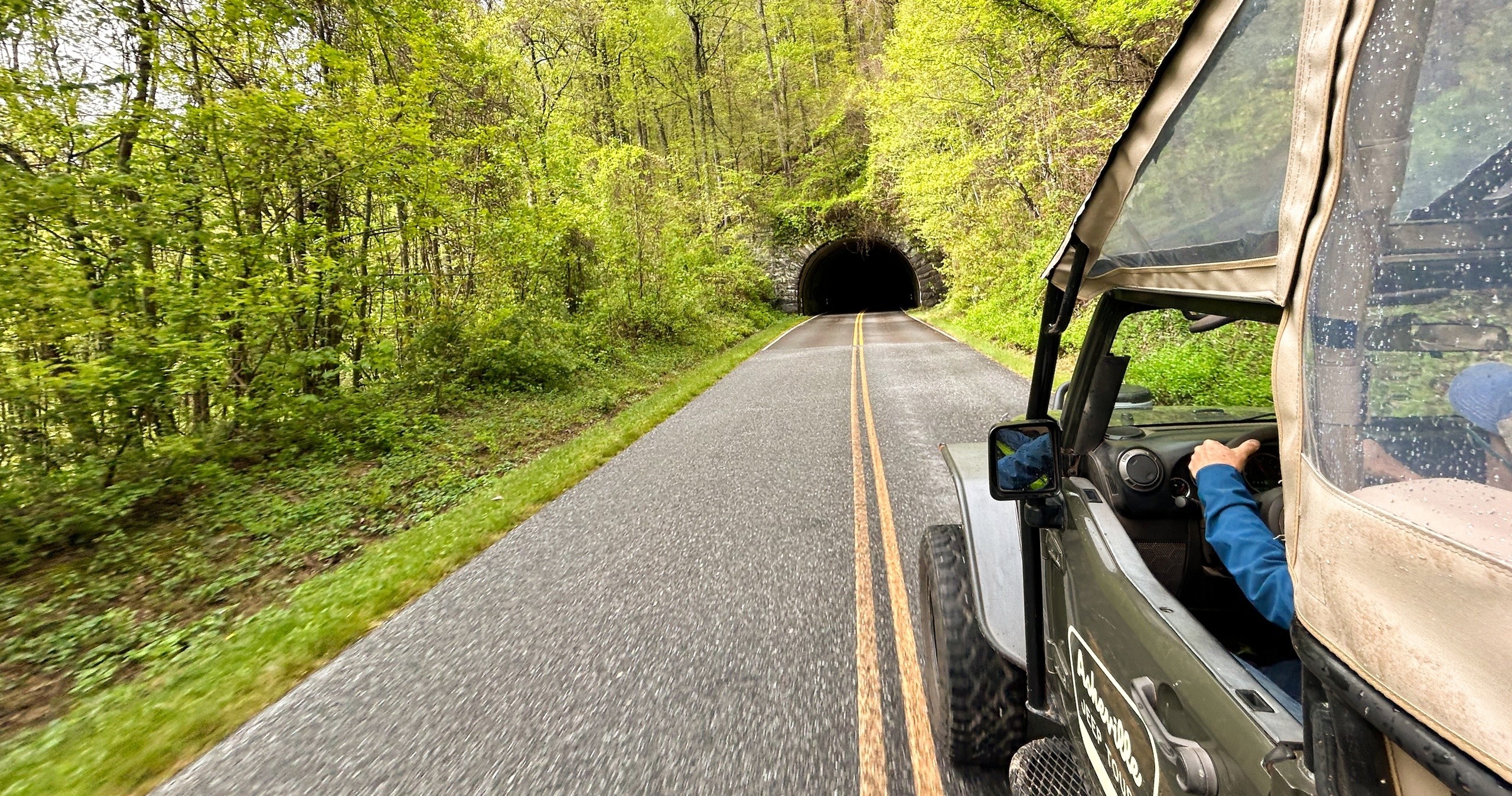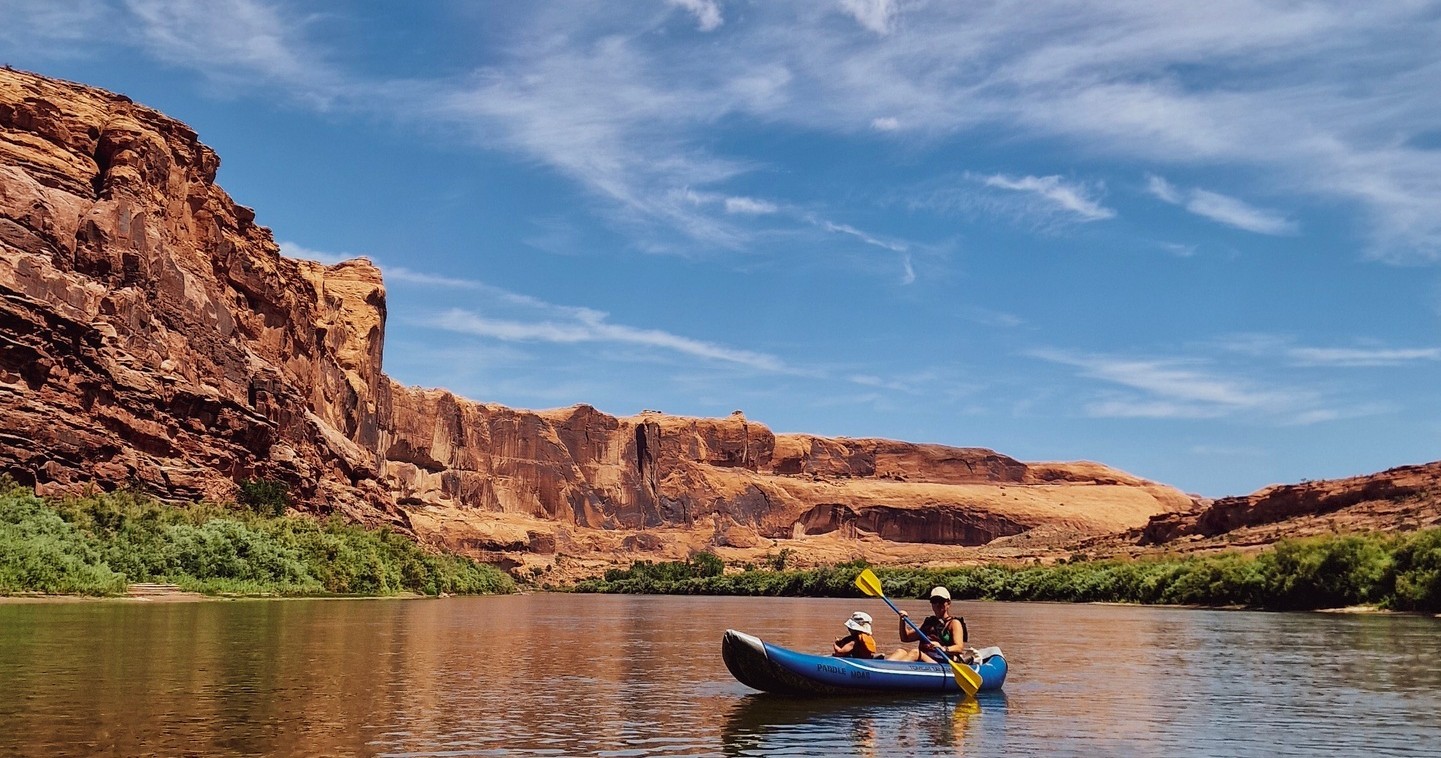Go With the Flow: A Self-Guided Kayak Day on Moab’s Colorado River
A self-guided paddle down the Colorado—no logistics, just you and the current.
By 8 a.m., the canyon has already found its voice—swallows skimming the river, cottonwoods whispering along the bank, the current quietly insisting on downstream. At Lion’s Park, just two miles from Arches National Park, a shuttle van idles beside a rack of inflatable kayaks. This is the easy button for a Moab classic: a drop-off upriver along UT-128 and a mellow, meandering glide back to your car. No puzzling over take-outs. No car shuttles to wrangle. Just the Colorado River, doing what it does best—pulling you through a red-rock corridor that makes time feel slow and generous.
Trail Wisdom
Start Early for Smooth Water
Morning hours are usually calmer with lighter winds—ideal for a mellow downstream glide and fewer crowds at the launch.
Read the Current, Not the Shore
Look for the V-shaped “tongues” of smooth water to line up your kayak and avoid shallow sandbars and snaggy eddies.
Dress for the Water, Not the Air
Spring water can be cold even on sunny days—quick-dry layers and a light shell beat cotton every time.
Mind the Afternoon Wind
Canyon breezes can build after lunch; plan turns and breaks in protected eddies so gusts don’t stall your progress.
Local Knowledge
Hidden Gems
- •Big Bend Recreation Area’s sandy beach for a mid-float snack stop
- •Grandstaff Canyon Trail (formerly Negro Bill Canyon) for a shaded hike to Morning Glory arch-span
Wildlife
Desert bighorn sheep, Great blue heron
Conservation Note
Stay off fragile cryptobiotic soil, use established launches, and pack out all trash. Riparian areas are critical habitat—land and re-launch only where durable surfaces exist.
Moab’s river corridor has been used for millennia by Indigenous peoples; the town later boomed during the 1950s uranium rush, while nearby Arches National Park was established as a national monument in 1929 and a park in 1971.
Seasonal Guide
spring
Best for: Cooler temperatures, Higher flows
Challenges: Cold water, Variable wind
Expect livelier current from snowmelt and crisp mornings. Dress warm, wear your PFD at all times, and keep snacks handy.
summer
Best for: Warm water, Family floats
Challenges: High heat, Afternoon gusts and monsoon storms
Launch early to beat the heat, bring extra water and electrolytes, and be off the river before afternoon storms build.
fall
Best for: Stable flows, Golden cottonwoods
Challenges: Cooler evenings, Shortening daylight
September–October brings ideal temps and fewer crowds; pack a light layer and keep an eye on sunset times.
winter
Best for: Quiet river miles, Crisp light
Challenges: Cold air and water, Limited outfitter schedules
Expect solitude and short days; dress in insulating layers and confirm shuttle availability well in advance.
Photographer's Notes
What to Bring
Sun Hoody or UPF ShirtEssential
Strong desert sun reflects off the water—lightweight UPF layers beat sunscreen alone.
Polarized Sunglasses with RetainerEssential
Cuts surface glare to spot shallow bars and keeps your glasses safe if a breeze or splash hits.
Small Dry Bag (10–15L)Essential
Protects snacks, phone, and an extra layer from spray and the occasional splashy riffle.
Closed-Toe Water Shoes or River SandalsEssential
Secure footing for sandy launches and rocky shallows makes getting in and out far easier.
Common Questions
How difficult is this section of the Colorado River?
It’s typically a mellow, moving-water float with occasional Class I–II riffles depending on flow. Basic paddling experience and comfort on moving water are recommended.
What’s included in the rental and shuttle package?
Inflatable kayak(s), paddles, PFDs, and a one-way shuttle up to 12 miles upriver. You float back to Lion’s Park where your car is waiting.
Do I need prior kayaking experience?
A little helps. If you can paddle straight, make simple turns, and read gentle current, you’ll be set. Newer paddlers should choose shorter distances and calm weather windows.
What should I wear on the river?
Quick-dry layers, a sun hoody or UPF shirt, secure water shoes, and a brimmed hat. In spring and fall, add a light shell and avoid cotton.
Are there age restrictions?
This operator welcomes all ages for this mellow section. For very young children, confirm appropriate PFD sizing with the shop before booking.
When do I need to return the gear?
Boats must be returned to the downtown Moab shop by 7 p.m. after you take out at Lion’s Park and deflate your kayaks.
What to Pack
UPF sun hoody and hat for relentless desert sun; 2–3 liters of water with electrolytes to stay ahead of heat; small dry bag for snacks, phone, and a warm layer; secure water shoes for sandy and rocky entries.
Did You Know
Arches National Park, just up the road from Lion’s Park, contains over 2,000 documented natural stone arches—the highest concentration on Earth.
Quick Travel Tips
Park at Lion’s Park early to snag shade; check USGS river flows and wind forecasts before committing to distance; book your shuttle/rental in advance during spring and fall; plan your paddle to be off the water before afternoon storms in midsummer.
Local Flavor
Refuel at Moab Brewery for a cold Dead Horse Amber and a burger, or hit Quesadilla Mobilla for quick handheld fuel right downtown. For coffee and a quick bite, swing by Love Muffin Cafe in the morning. If you have energy left, stroll the Moab Arts & Recreation Center for local events or catch sunset from the pedestrian bridge.
Logistics Snapshot
Closest airport: Canyonlands Regional (CNY), 16 miles; Grand Junction (GJT) ~110 miles. Trailhead/launch hub: Lion’s Park at the Colorado River bridge on UT-128. Downtown Moab is ~2 miles away. Cell service is spotty in the canyon; download maps offline. No permits needed for day-use on this mellow section; some BLM sites may have small parking fees.
Sustainability Note
This desert river corridor is fragile—pack out all trash and food waste, avoid trampling cryptobiotic soil, and use existing launches and beaches to prevent erosion and vegetation damage.
Continue Reading

Blue Ridge Parkway by Jeep: Asheville’s Big-View Drive Without the Footslog
Trade trail dust for ridge-line views on a guided Blue Ridge Parkway Jeep tour out of Asheville. Over 3–4 unhurried hours, hop between classic overlooks, craft stops, and story-rich vistas—no hiking boots required.
Asheville, North Carolina

Into the Lower Canyon: 6.5 Days Oaring the Colorado’s Big Water
Start before dawn on the South Rim, hike 9.5 miles to the Colorado, and settle into six and a half days of oar-powered whitewater, side canyons, and starlit camps. This Lower Canyon journey pairs big water with smart logistics—and ends in a helicopter lift out of the heart of the Grand Canyon.
Grand Canyon Village, Arizona
